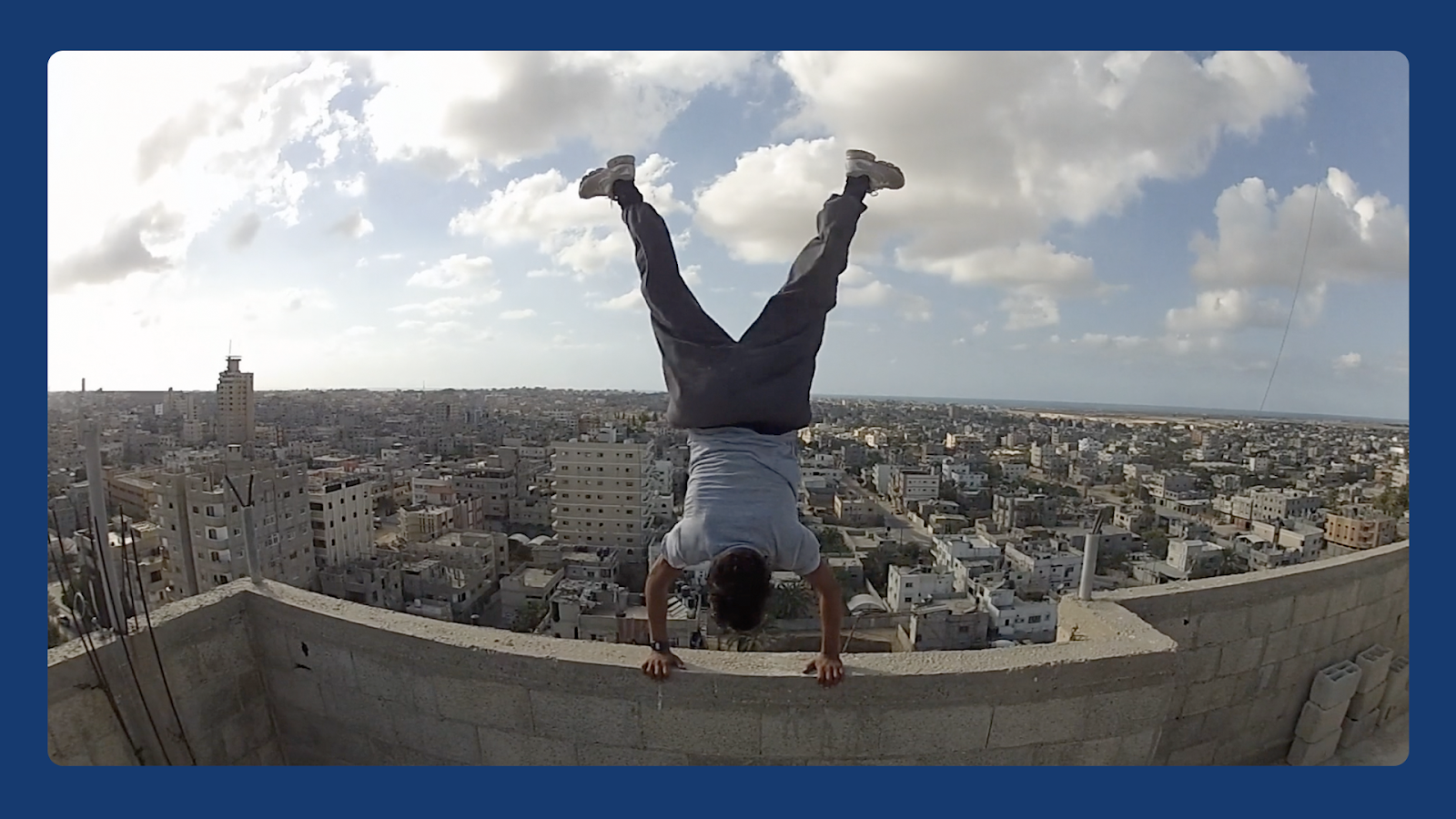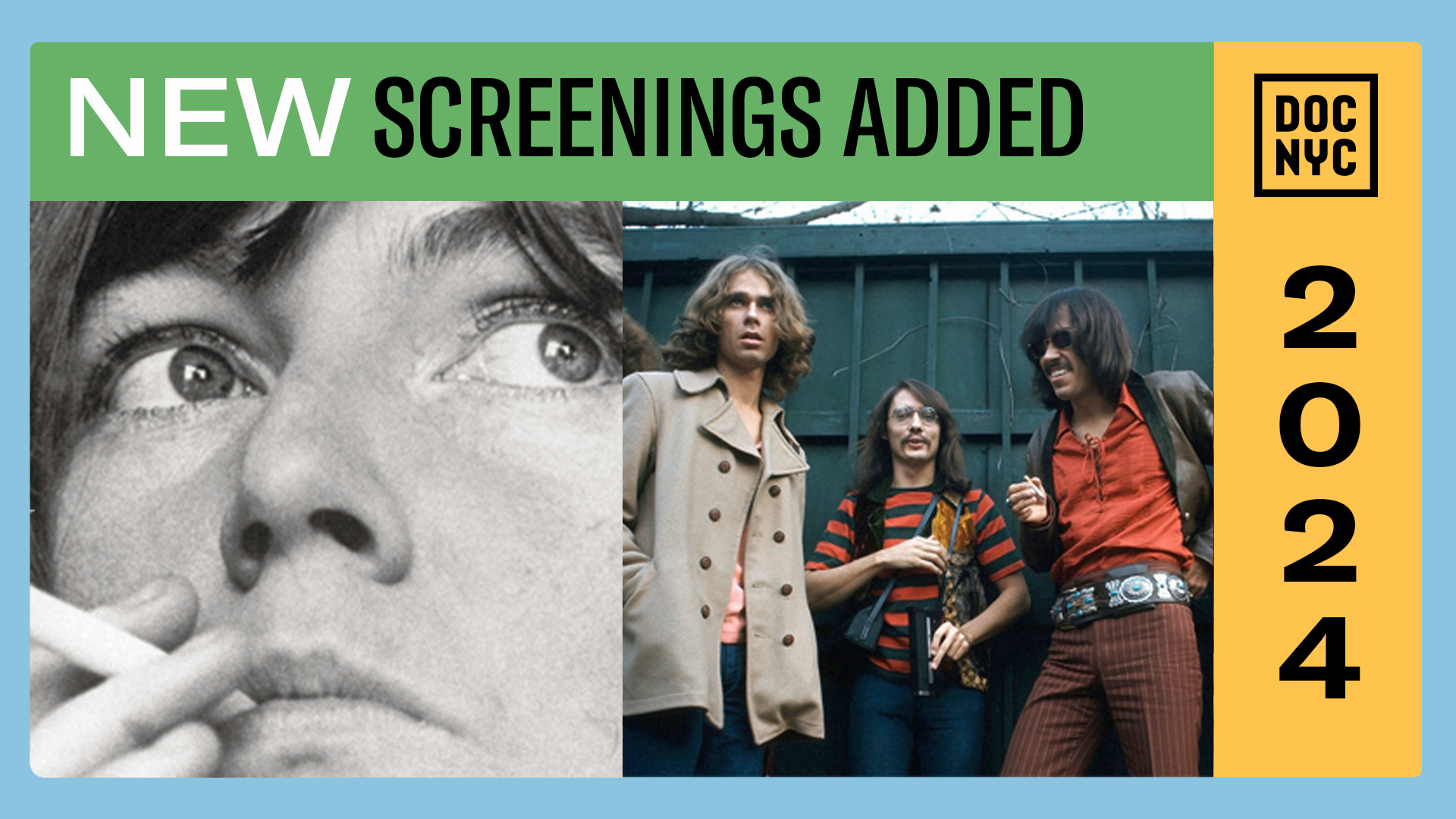THE VILLAGE VOICE’S PICKS AT DOC NYC

DOC NYC OFFERS HUNDREDS OF FILMS. HERE ARE SOME OF THE BEST.

|
U.S. Marines veteran Phil Straub in a scene from Thank You for Your Service
Justin Garcia
|
A sad truth of our age of Kickstarter is that the term documentary is still regularly applied to nonfiction films that don’t actually document anything more substantial than an argument or a political viewpoint. The talking heads talk, and what audiences actually look at — what the film actually is — is animation or the best vaguely related vintage film clips that the producers could afford.
That’s yet another reason to be thankful for the mad plenty of DOC NYC, a week-long truth deluge that, in its sixth year, is the country’s largest documentary festival, this time offering up over 150 films, most of them built around footage worth seeing. Even those old clips often are wonders. No film here moved me as much as Stu Maddux’s Reel in the Closet, which documents vital documents and the quest for more: “All the moving images in this film were made or saved by members of the LGBTQ community,” a title card instructs, and what follows are the private home movies of Americans who often could not live their real lives in public.
Here’s a Forties reel shot by a strapping grown-up fellow of himself and his pals skinny-dipping — you have to wonder who they turned to to develop it! And here’s a miraculous soundie, found at a flea market, of lesbian performers at San Francisco’s Mona’s Candle Light in the 1950s, crooning to an audience who could only be themselves in secret. One singer’s “Tenderly” will pierce you. Of course, there’s also much footage of public protests, from the late Sixties on, but the revelation is the everyday stuff, the moments that aren’t big enough for most people to feel they should be captured. Now they contain full worlds and lives.
DOC NYC’s curatorial spirit is generous, not beholden to any sort of programmers’ zeal for premieres above all else. If you’ve missed any of this year’s most highly touted docs, the ones likely to be toasted in next month’s critics polls, you can catch up in the Short List sidebar: Here’s Joshua Oppenheimer’s The Look of Silence, Asif Kapadia’s Amy, Ethan Hawke’s Seymour: An Introduction, and other films that have enjoyed local theatrical runs — hell, Going Clear has already played on HBO for months. And, yes, fans of big fish in small ponds can catch Where to Invade Next, the new Michael Moore, a couple of weeks before it becomes inescapable.
Sure, go nuts with those. But the knockouts aren’t limited to the famous names. David Shapiro’s Missing People is a complex story of the art world meeting the streets — and the residents of both facing down trauma. The film follows Martina Batan — curator, grown-up ex-punk, and onetime muse to Peter Bagge — to New Orleans as she attempts to track down the work of artist Roy Ferdinand, an uncompromising illustrator, painter, provocateur, and chronicler of his neighborhood. His unsettling canvases depict street life at its toughest, and Batan’s conviction that his pencil-and-paint reportage is a significant artistic breakthrough confounds New York’s art world — and, at first, stirs suspicion in Ferdinand’s family, who wonder about her intentions. The story, like the art, is steeped in tragedy, yet it’s also beautiful, tender and hopeful in surprising corners. (Another terrific art drama: I Am Sun Mu, about a North Korean defector daring a gallery show in Beijing.)
Tragedy also haunts Left on Purpose, another hard-times portrait, directed by Justin Schein and David Mehlman. Schein had started to film a short-subject look at the life of Mayer Vishner, the Yippie and Bleecker Street institution, and Vishner at first complies, amusingly carping about the state of the Village. Here he is dressing down a featureless university building: “At the very least there’s gotta be ‘Fuck NYU’ written on these walls — there’s nothing!” But the film grows deeper and more pressing when Vishner tells Schein that he plans to end his storied life — and that that should be the subject of the film. Schein protests, argues for life, contemplates the ethics of a documentarian interfering with his subject’s plans. The ending will gut you, but there are laughs along the way. One more Vishnerism, on the topic of why a short never would have worked: “You couldn’t explain how complex I am, the different facets…the places I’ve been. You know, the fuckin’ Forrest Gump of the late Sixties until the mid-Eighties, with the difference that in every situation I moved it along!”
Tom Donahue’s Thank You for Your Service also stares into the lives of the hurting. The film investigates the epidemic of psychic trauma among veterans of our desert wars; unlike in most docs that fall into unabashed advocacy, Donahue’s footage — wrenching testimonials from soldiers, spouses, and the highest of government and military muckety-mucks — tells gripping stories rather than just serving the argument. The argument, though, is persuasive: It’s deeply immoral to train citizens for war but then not train them again, afterwards, for living.
More institutional failure: Curtis Chin’s Tested is a brisk, moving look at the Specialized High School Admissions Test and the absurd way New York sorts children into high-performing schools like Stuyvesant, Bronx Science, and Brooklyn Tech. Chin introduces a cross section of kids and parents, many of whom see landing a place in these competitive schools as the best chance at a better life. Hanging over every study group and test-prep session is a question that never goes away: How does a bureaucracy discover talent in low-income or underrepresented communities? “You were born with two strikes against you,” one African-American mom tells her promising kid. “Don’t be dumb and make it three.”
Even lives of fame look hard in the best of these films. Rob Hatch-Miller’s Syl Johnson: Any Way the Wind Blows tracks the don’t-call-it-a-comeback of one of the greatest of soul singers never to light up the charts. Underpromoted by his label, which was making bank with Al Green, Johnson nevertheless has hit your ears thousands of times: His introductory grunt on 1968 single “Different Strokes” is to early hip-hop what spinach was to Popeye, powering Boogie Down Productions’ “Criminal Minded” and dozens of other killer tracks. Hatch-Miller lets Johnson talk and sing and crab at us as the singer at last enjoys the recognition due him: He rehearses with the Brooklyn Rhythm Band and is more surprised than you will be that his career-overview boxed set gets nominated for a Grammy.
I haven’t seen Barbara Kopple’s Miss Sharon Jones!, about the local-hero soul dynamo, but I’m dying to, especially as Voice music editor Hilary Hughes has gushed about it since its premiere at the Toronto International Film Festival. The film is getting the gala treatment; Hughes raves, “It turns an unblinking eye on the cavernous lows, exultant highs, and soul-shaking music of the singer’s life in the year following her battle against pancreatic cancer.”
I also loved the experiential nature of Barge, Ben Powell’s meditative glide down the Mississippi on an industrial freighter. The surroundings — riverbanks and slowly churning waters alight with the sun, but also dreary boat kitchens and break rooms — and the workmen inhabiting them prove a compelling mix of the magnificent and the humdrum. There’s no narrative, really, except the beauty of the journey, and its relentless dullness, and the boredom of Powell’s subjects, many of whom speak frankly about how hard their work is — and how hard it is even to find such work anymore.
Another gig that gets an exciting film, one more conventionally thrilling: the masked lucha-style wrestling, in Mexico, that looks just as whirligig-brutal behind the scenes in Ian Markiewicz and Alexandria Hammond’s Lucha Mexico as it does on TV. The filmmakers trail a pair of grapplers, Shocker (who bills himself “El 100% Guapo”) and his tag-team partner Jon “Strongman” Andersen; we learn about their training, their technique, their family histories, and of course their energies. The film is one of the fest’s most generous in terms of breadth — there are revelations about the sport, its performers, and its fans every few moments, and the screen bursts with color and wild motion.
The films about films are also lighter and joyous. Kent Jones’s Hitchcock/Truffaut boasts audio of the epochal interviews that constitute the book it’s based on. What this adaptation lacks in sweep in its examination of Hitchcock’s films it makes up for in clips: As Hitchcock croaks out his most famous insights from the book, we see the scenes, their storyboards, his thinking. The film departs from the text for celebrations of Hitch from directors of today, most delectably Scorsese on the seductions of Vertigoand Kiyoshi Kurosawa on the epic Grant-Bergman make-out in Notorious.
Richard Linklater marvels in Hitchcock/Truffaut about the great director’s visual daring: “I imagine he just sat alone and these images just came to him, and he just never questioned it.” Linklater’s second-guessed by Daniel Raim’s Harold and Lillian, a cheery tribute to storyboard artist Harold Michelson and film researcher Lillian Michelson. Harold first drew The Birds‘ astonishments, and Lillian collected information on breeds and flight patterns. This duo, a married couple, improved a great host of famous films over half a century, and Lillian dishes marvelously about them, including a devilish story about life filming those birds: Bodega Bay is a long way from Hollywood, and she once rode up to visit Harold with a busload of prostitutes shipped north from L.A.
It’s the kind of jewel that true documentarians turn up — when directors stop making movies to prove what they think they know, and instead go out in search of what they don’t.
DOC NYC
November 12 through 19
IFC Center, SVA Theatre, and Bow Tie Chelsea Cinemas




